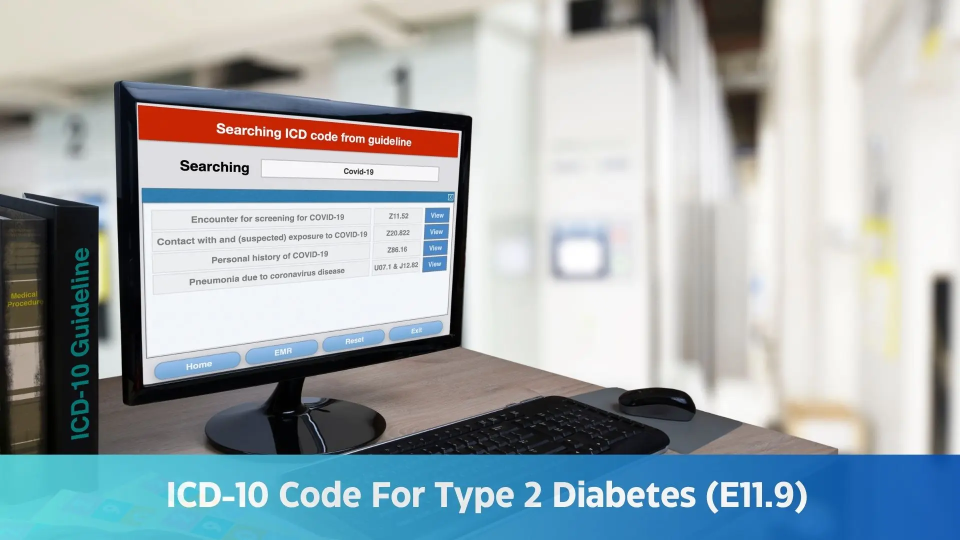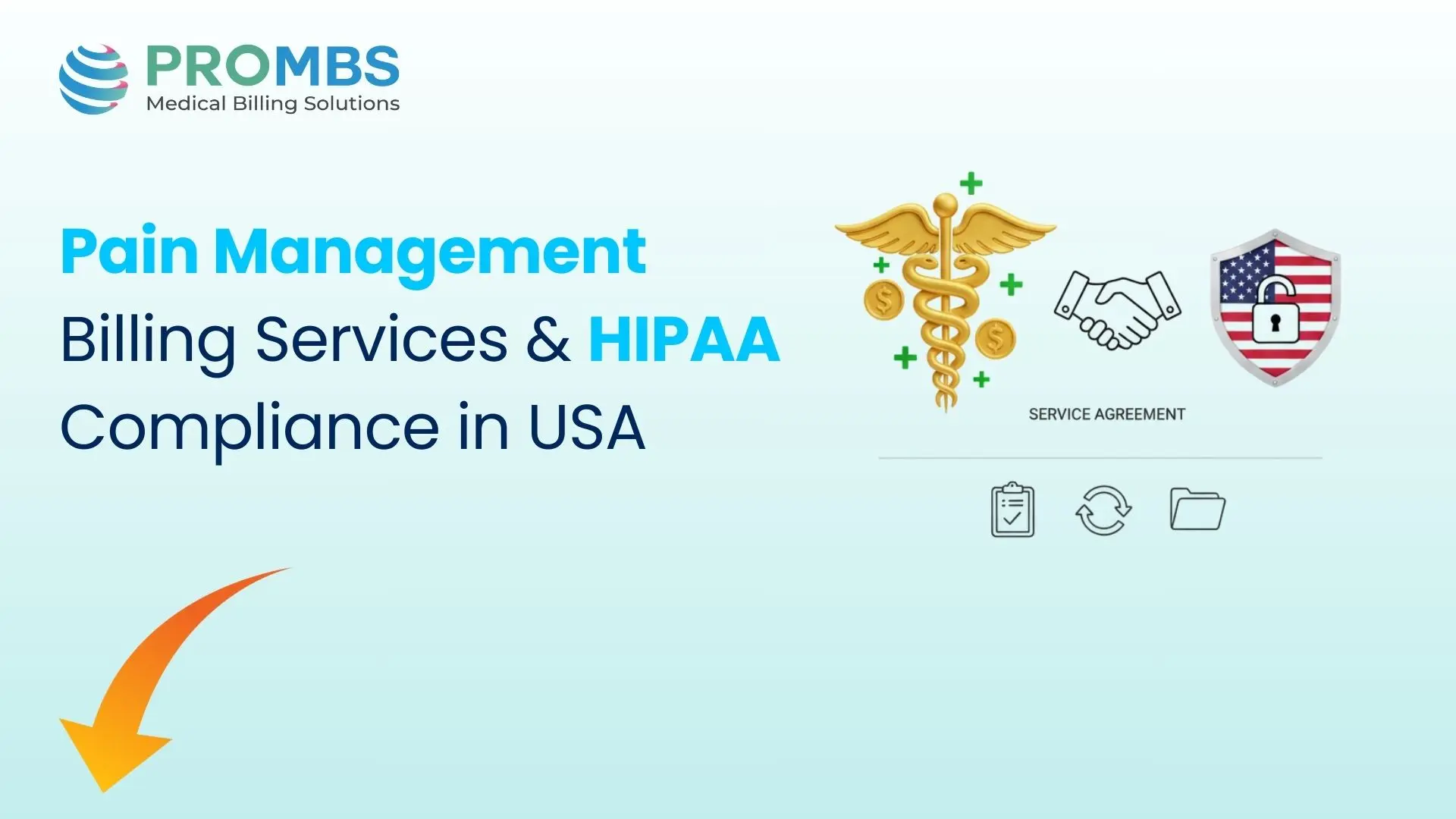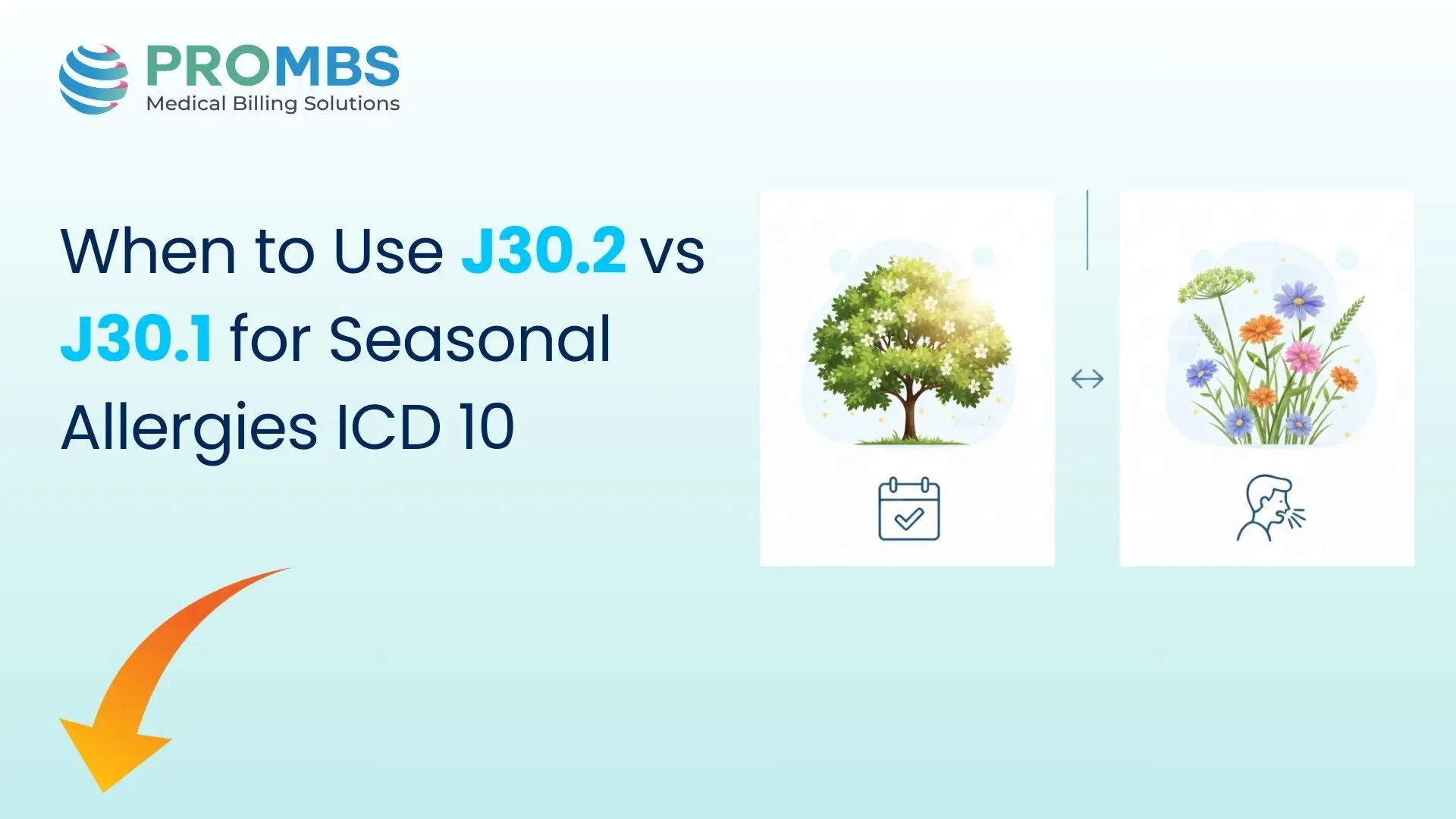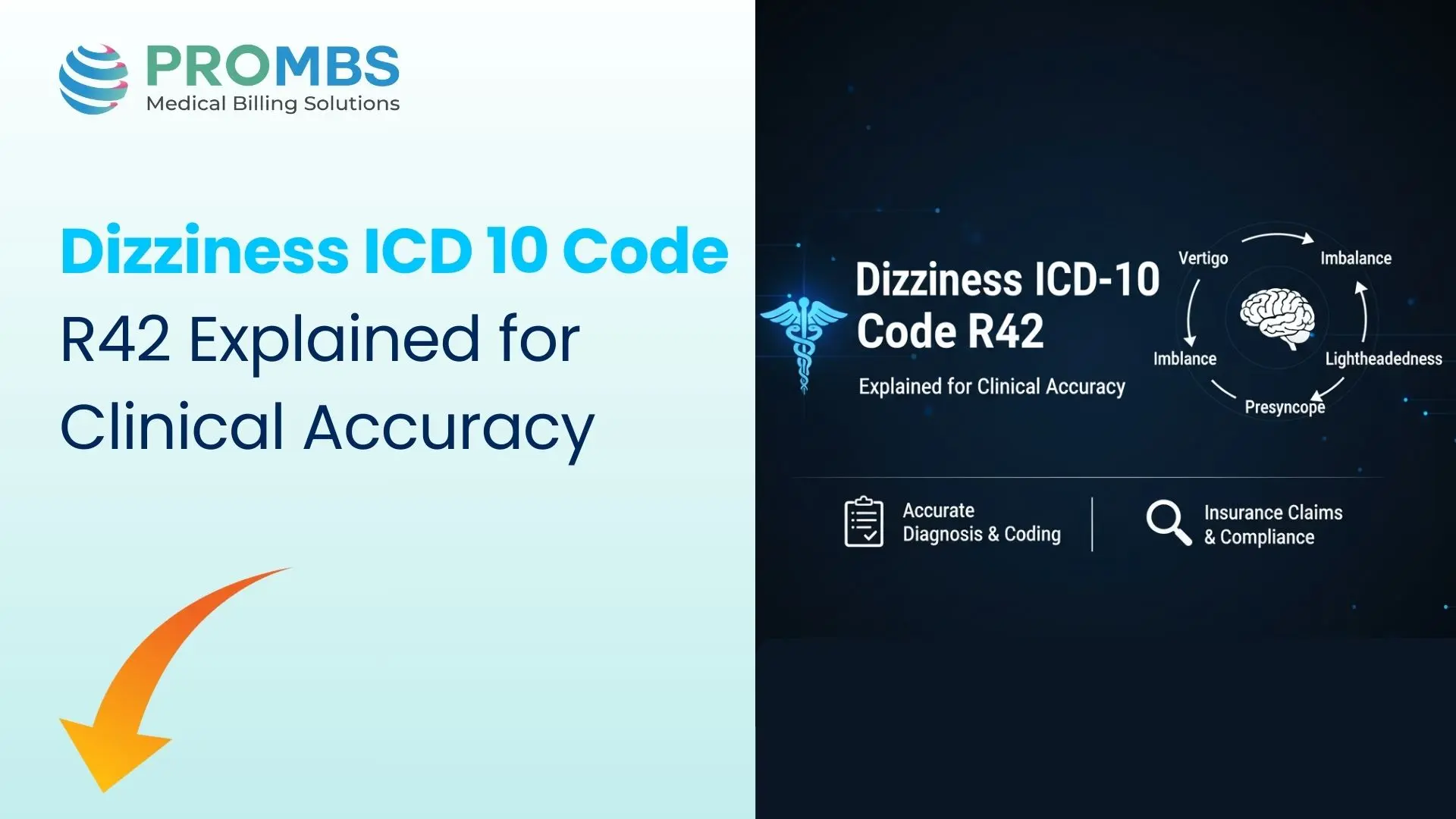Introduction
In the complex world of medical billing and coding, understanding how to correctly assign the ICD-10 code E11.9 is essential for both compliance and revenue cycle success. This code, which denotes type 2 diabetes mellitus without complications, is among the most frequently used diabetes ICD-10 codes in primary care. Despite its routine use, many providers still face claim denials due to documentation gaps and misapplication.
This guide will help you understand what ICD-10 code E11.9 means, how to use it accurately, common payer pitfalls, and documentation strategies that ensure your claims are clean and audit-proof.
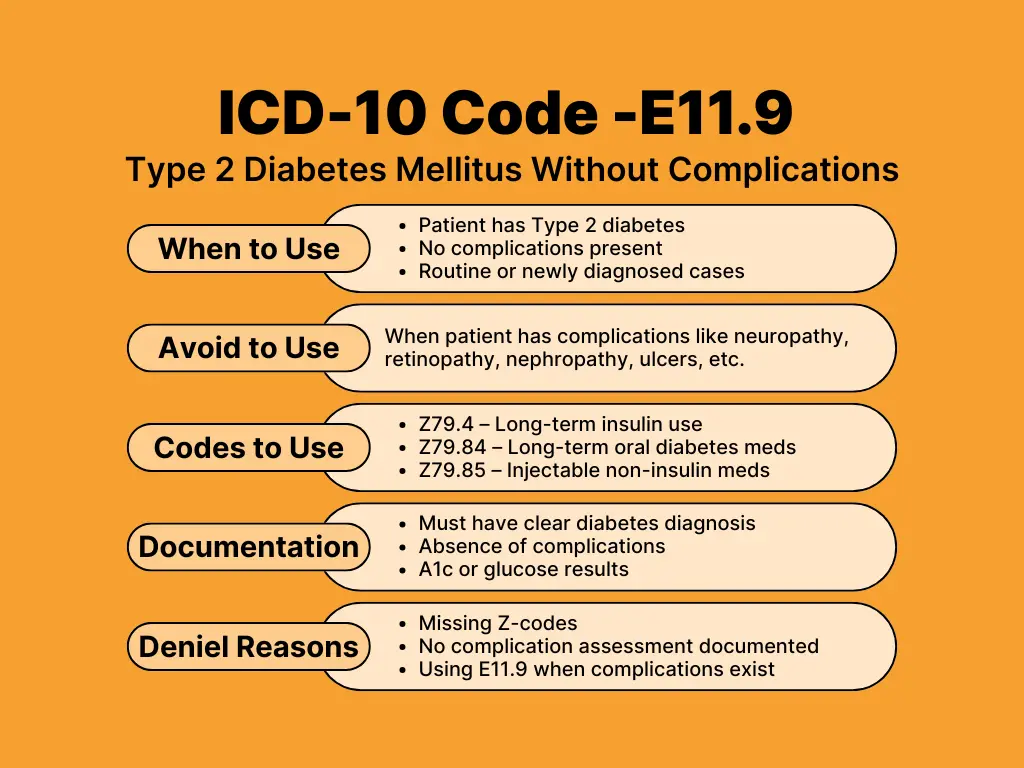
What is ICD-10 Code For Type 2 Diabetes Mellitus Without Complications?
ICD-10 Code E11.9 represents Type 2 Diabetes Mellitus Without Complications. It’s used when a patient has type 2 diabetes but does not have any documented complications such as retinopathy, neuropathy, nephropathy, or ketoacidosis.
Code Breakdown
- E11 refers to type 2 diabetes mellitus
- 9 means no complications are documented
E11.9 is typically used for patients who are managing their diabetes through diet, oral medication, insulin, or a combination thereof but do not currently experience any adverse health effects related to their condition.
When to Use ICD-10 Code E11.9?
Use ICD-10 Code E11.9 only when the following are true:
- The patient has a diagnosed case of type 2 diabetes
- There is no evidence of complications (nephropathy, retinopathy, foot ulcers, etc.)
- The condition is either newly diagnosed or under stable, routine management
Example
Important Supporting Codes to Use with ICD-10 Code E11.9
To ensure your billing is complete, certain Z-codes should accompany ICD-10 Code E11.9, depending on the patient’s therapy:
- Z79.4 - Long-term (current) use of insulin
- Z79.84 - Long-term use of oral hypoglycemic drugs
- Z79.85 - Long-term use of injectable non-insulin diabetes medications
These Z-codes provide clarity on the patient’s treatment plan and often influence payer decisions for reimbursement.
Documentation Requirements for ICD-10 Code E11.9
Proper documentation is the cornerstone of accurate coding. Incomplete or vague charting is a leading cause of claim denials for diabetes ICD-10 codes.
To justify ICD-10 Code E11.9:
- Clearly state the diagnosis: Type 2 diabetes mellitus
- Specify absence of complications
- Include blood glucose or HbA1c test results if available
- Mention current treatment (e.g., diet, metformin, insulin)
Apply the MEAT principle:
- Monitoring (A1c checks, glucose monitoring)
Evaluating (reviewing test results) - Assessing (clinical notes on stability)
- Treating (lifestyle advice, prescriptions)
Sample Documentation Note
Common Payer Mistakes and How to Avoid Them
Missing Treatment Codes (Z-Codes)
Assumed Absence of Complications
Overuse of ICD-10 Code E11.9
Some providers default to using ICD-10 Code E11.9 even when the patient has documented complications. This can result in inaccurate coding and denied claims. If your documentation includes signs of complications such as diabetic foot ulcers or retinopathy noted during eye exams then a more specific diabetes code must be used. Avoid using E11.9 in cases where complications are present.
No Clinical Justification for Continued Therapy
How EHR Systems Can Help
Stay Updated with ICD-10 Guidelines in 2025
Every year, ICD-10 codes are reviewed and updated to reflect changes in medical understanding and healthcare regulations. As of 2025, the E11.9 code remains the valid ICD-10 code for Type 2 diabetes mellitus without complications. However, healthcare providers and billers should always consult the most recent CMS ICD-10 updates to ensure compliance. Updated coding guidelines help maintain accuracy in claims submission and reduce the risk of denials.
Key Updates to Watch For
Some of the critical updates to monitor in 2025 include new documentation standards implemented by leading payers such as Medicare, UnitedHealthcare, and Aetna. These updates often affect how providers must record diagnosis and treatment details in their clinical notes. Additionally, changes to the ICD-10-CM Official Guidelines for Coding and Reporting may alter code selection or sequencing requirements. There is also a growing emphasis on documentation integrity under value-based care models, meaning payers will scrutinize how thoroughly complications are ruled out and treatment decisions are supported by clinical data.
Tips to Maximize Reimbursement
Properly billing the ICD-10 Code E11.9 code does more than prevent claim denials; it ensures full and timely reimbursement. Clinics that follow best practices when coding diabetes diagnoses tend to experience fewer rejections and smoother revenue cycles. Several steps can help providers consistently get paid for diabetes care services without unnecessary administrative delays.
Best Practices
Start by carefully reviewing each patient’s chart to verify that there are no complications that would require a different code. When applicable, include precise Z-codes that indicate how the condition is being managed, such as with insulin or oral medications. Training providers to meet documentation standards is equally important and ensures consistency across the care team. Internal chart audits can help identify common coding or documentation mistakes. Lastly, make sure your coding process is well integrated with your clinical workflow to minimize errors and maintain efficiency.
Why Accurate Diabetes ICD-10 Coding Matters
Using the correct ICD-10 code for diabetes especially E11.9 has implications that go beyond billing. Accurate coding directly affects patient care quality, health tracking across populations, and outcomes based reimbursement. Many commercial and government payers, including Medicare Advantage plans, now require evidence such as A1c levels and treatment types to justify reimbursement.
When you code ICD-10 Code E11.9 correctly, your clinic benefits in multiple ways. It reduces the chance of audits, ensures patients receive timely and appropriate care, and supports larger healthcare initiatives like value-based care. Consistently accurate coding also fosters stronger relationships with payers by demonstrating compliance and clinical integrity.
Final Thoughts
On the surface, billing the ICD-10 Code E11.9 may seem like a routine task, but in practice, it demands attention to detail and strict documentation. Many claim denials can be traced back to errors such as assuming the absence of complications without evidence or neglecting to include essential Z-codes.
To ensure clean claims:
- Use ICD-10 Code E11.9 only when no complications are present
- Support the diagnosis with treatment-related Z-codes
- Stay current with annual ICD-10 updates
- Apply the MEAT criteria for documentation
- Perform regular audits to catch potential issues early
When these best practices are followed, ICD-10 Code E11.9 billing becomes a reliable and efficient part of your revenue cycle. By taking a proactive approach, your practice can improve compliance, streamline payments, and ultimately enhance patient care.
